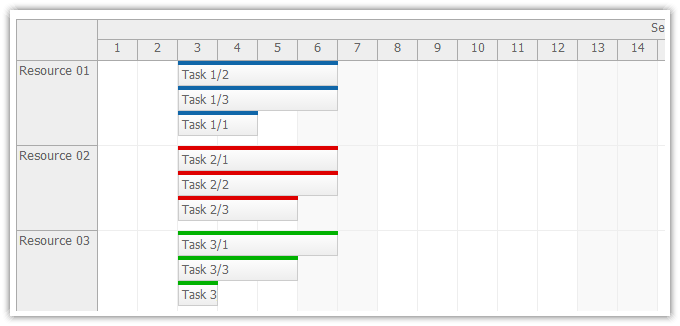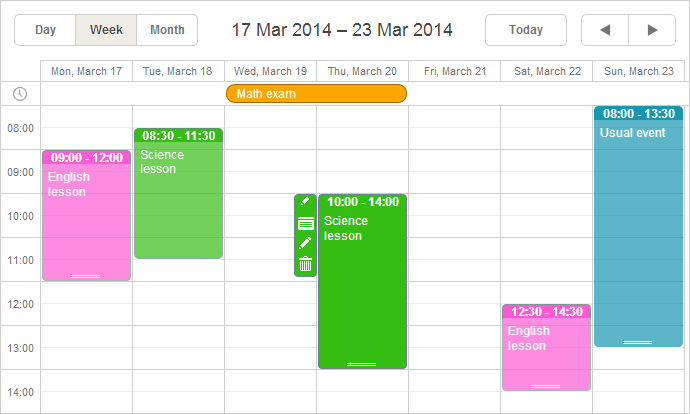
You can’t do much with this simple event calendar.
NET SCHEDULER CODE
If you’re lazy enough, you can simply download the source code for this example here.Īfter the job is done, you can check the results: It’s a little bit hard to get started with it if you haven’t used Visual Studio before.
NET SCHEDULER HOW TO
It’s a step-by-step guide which shows how to create a project in Visual Studio, create a database and attach it to your project, etc. Which is, in our case, this basic calendar tutorial page. However, it’s not too hard to find the page you want. There are pages for different kinds of features for all of the DayPilot components. The tutorial page is a little bit messy at first sight. If you want to check what you can get from it, check this demo page.
NET SCHEDULER FULL
The full list of features is available on this page. Available file formats are BMP, PNG, GIF and JPG Since Scheduler and Gantt Chart are more specialized tools we’ll take a look at something more commonly used. ASP.NET Gantt Chart for those who want to build a Gantt Chart:.ASP.NET Scheduler is useful if you want to group you events into different categories:.ASP.NET Monthly Calendar will help you create a month schedule:.ASP.NET Event Calendar is an event calendar that allows you to plan your day hour by hour:.Good structured documentation pages with understandable step-by-step guides will be a plus.ĭayPilot provides you with different kinds of time management tools: The other important thing is documentation.

We will check how the basic calendar looks like and behaves. We’ll use Microsoft Visual Studio 2013 to create demo applications. NET scheduling components to make clear which of them is worthy of attention and good for beginners. This article’s aim is to take a look at the four most popular. And finally, there are stand-alone tools which can be integrated with other components. There are third-party plug-ins for big frameworks and built-in parts of these frameworks. But the overall quantity of available schedulers can confuse you. Your schedule will be safe if something happens to your laptop or smartphone. # Examples # Run a task once an hour only on Mondays.What’s good about online schedulers is that you can get an access to your data from any of your devices. This will keep your app running in the background - as long as the parent process is not killed.


When your app is stopped, Coravel will wait until any running scheduled tasks are completed. Any super intensive tasks can be put onto their own worker and therefore won't cause the other scheduled tasks to lag behind! # On App Closing You can choose to scale-out your scheduled tasks however you feel is most efficient. This is useful, for example, when using Coravel in a console application. RebuildStaticCachedData has it's own dedicated worker so it will not affect the other tasks if it does take a long time to run. OnWorker ( "CPUIntensiveTasks" ) įor this example, SendNightlyReportsEmailJob and SendPendingNotifications will share a dedicated pipeline/thread. Run the task at 12 minutes past every hour # IntervalsĪfter calling Schedule or ScheduleAsync, methods to specify the schedule interval are available. Ensure that any parameters to be injected via dependency injection are listed first in your constructor arguments.


 0 kommentar(er)
0 kommentar(er)
